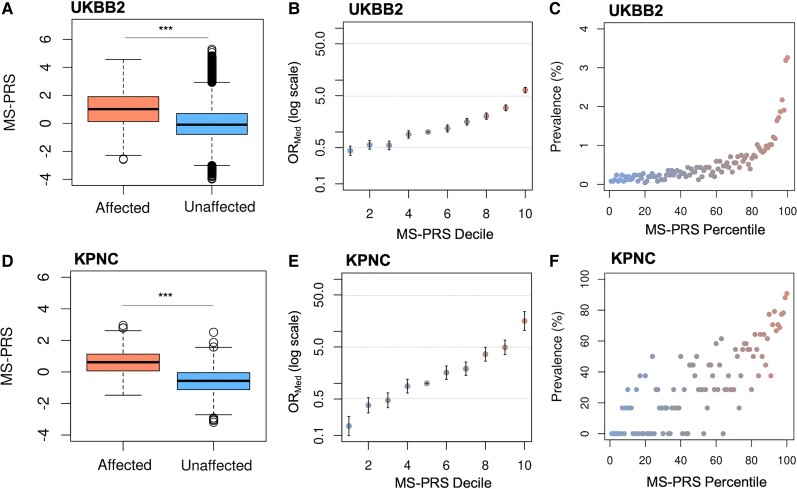Figure 2.
Discriminative power of MS-PRS in the UKBB2 and KPNC datasets. (A) The MS-PRS of subjects affected by multiple sclerosis (mean = 1, IQR = 1.770, min = −2.575, max = 4.561) is greater than unaffected individuals (mean = −0.005, IQR = 1.484, min = −3.979, max = 5.3) in UKBB2 (***P = 1.29 × 10−190). (B) The ORMed at higher MS-PRS deciles relative to the median decile is increased more than 5-fold in UKBB2. The y-axis is on a log scale. Bars are standard errors. (C) Prevalence of multiple sclerosis in UKBB2 increased according to the MS-PRS percentile. (D) Consistent with UKBB2, the MS-PRS of cases (mean = 0.585, IQR = 1.064, min = −1.474, max = 2.945) is higher than controls (mean = −0.579, IQR = 1.076, min = −3.193, max = 2.514) in KPNC (***P = 1.5 × 10−53). (E) The ORMed in the top MS-PRS decile of KPNC is higher than 15-fold relative to the median decile. (F) A linear increase of the multiple sclerosis prevalence with respect to MS-PRS is observed in the KPNC cohort. IQR = interquartile range; min = minimum; max = maximum.

